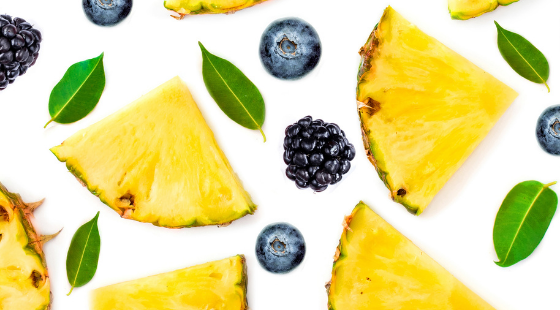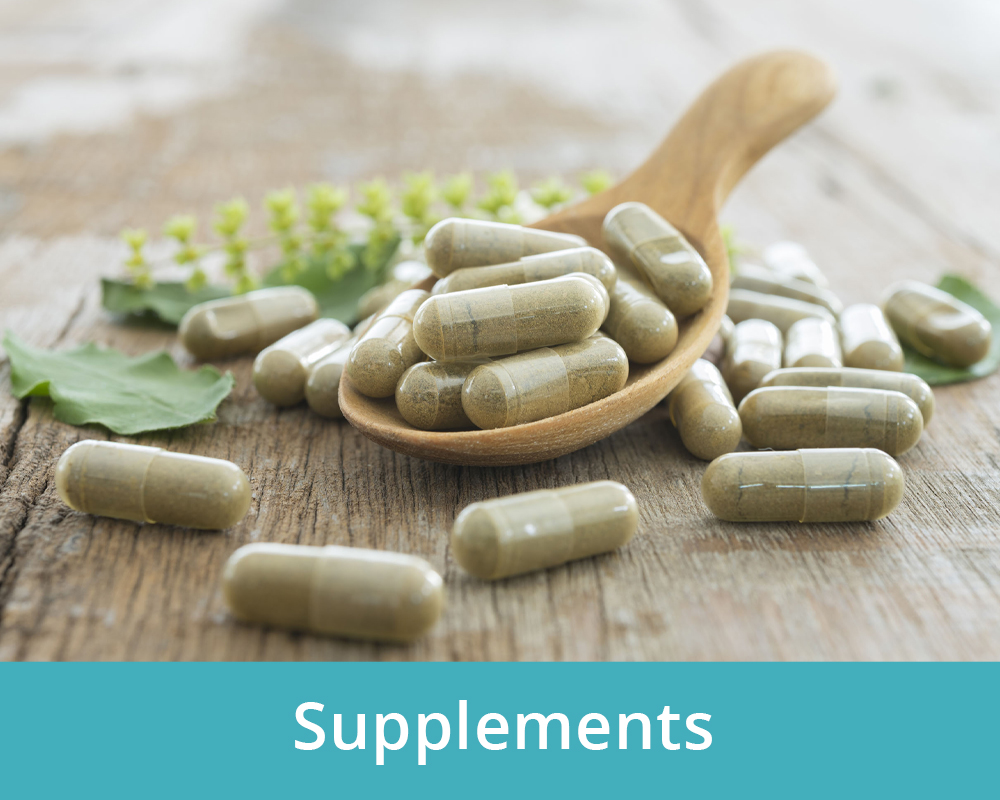
Top 10 Anti-Inflammatory Foods

1 in 5 Canadians – that’s 8 million of us – live with chronic pain. Chronic pain impacts children, adults, and the elderly, affecting the way individuals take part in school, work, family life, and within their communities. Unfortunately, with pain often comes reduced activity levels and difficulties participating in daily tasks such as grocery shopping and meal preparation and often people seek out more quick on-the-go foods, prepared foods, or take out to help avoid pain flare ups. This unfortunately can often fuel pain experiences as these types of foods contain many ingredients and substances that contribute to inflammation.
The goal with reducing inflammation and subsequent pain in the body is to remove inflammatory foods from the body such as processed foods, hydrogenated oils, sugars, saturated and trans fats from the diet while integrating anti-inflammatory foods into the diet instead. There are many foods that have been identified as anti-inflammatory foods that have been well researched. To learn more about the role of nutrition and reducing inflammation check out our article Can Nutrition Really Help With Inflammation And Chronic Pain?
Focusing on a few specific foods is a great way to begin incorporating anti-inflammatory foods your diet.
Below are our Top 10 Anti-inflammatory Foods, and some healthy recipes to help you introduce them into your diet.
- Turmeric has massive anti-inflammatory benefits! In a review of the effects curcumin has on osteoarthritis, participants reported improvement in pain, physical function, and quality of life after taking curcumin, with decreased use of pain medication. (4) For more about the medicinal properties of turmeric, check out our recent article on the Top 5 Health Benefits of Turmeric. We’ve also created a Turmeric Latte recipe that you’re sure to find delicious, even if you’re not usually the biggest fan of turmeric!
- Green tea is rich in flavonoids which are anti-inflammatory, contains fat burning properties to help manage healthy weight, and L-theanine to relax the mind and the muscles. Of course, green tea makes for a simple and delicious cup of comforting tea or as a cold refreshing drink in the summer, but you could also try out our Green Tea Ice Cream recipe for something new!
- Berries pack a mighty punch when it comes to fiber, antioxidants and other amazing phytochemicals that can help reduce inflammation. Berries contain antioxidants called anthocyanins. These compounds have anti-inflammatory effects that may reduce your risk of disease and pain. In one study, adults with excess weight who ate strawberries had lower levels of certain inflammatory markers (10) Check out our Berry Beet Smoothie Bowl!
- Oily fish is loaded with omega 3’s which are anti-inflammatory and can help to reduce inflammation and pain and boost mood. One study have found that individuals that consumed salmon or EPA and DHA supplements experienced reductions in the inflammatory marker C-reactive protein (CRP). (11) Our Smoked Salmon and Avocado Toast is a simple way to consume more healthy fats!
- Dark Leafy greens are an excellent source of nutrients including folate and iron, plus pain relief minerals such as calcium and magnesium, antioxidants including zinc and vitamin C, and fiber. They also contain high levels of anti-inflammatory compounds known as carotenoids, which may protect against certain types of cancer. (8) A simple green salad is always a great way to fit in more greens, but if you’re looking for a way to sneak more greens into your diet without even noticing them… check out our Green Monster Muffins.
- Ginger contains anti-inflammatory compounds that function in the same way as COX-2 inhibitors. COX-2 inhibitors are drugs used to treat pain and inflammation. Researchers in one study found that ginger was an effective pain reliever for human muscle pain resulting from an exercise-induced injury (9). This powerhouse green smoothie is an easy way to include some ginger in your diet!
- Shiitake mushrooms have been studied for their protective qualities against cancer and inflammation. Bioactive compounds in shiitake mushrooms are responsible for their therapeutic effects. (7) If you’re interested in including more mushrooms in your diet, check out our Broccoli & Mushroom Fried Quinoa because Shiitake mushrooms work perfectly in this dish!
- Papaya contains papain, a protein-digesting enzyme. Together with other nutrients such as vitamin C and E, papain helps to reduce inflammation. one study noted that men who increased their intake of fruits and vegetables high in carotenoids such as papaya had a significant decrease in CRP, a particular inflammatory marker (9). Enjoy on its own as a delicious snack.
- Extra virgin olive oil offers a rich supply of polyphenols to protect the heart and blood vessels from inflammation. The monounsaturated fats in olive oil are also turned into anti-inflammatory agents by the body, which can lower occurrences of asthma and rheumatoid arthritis. Researcher led by Paul Breslin of the Monell Chemical Senses Center in Philadelphia indicated that a daily dose of 4 tablespoons of olive oil is the equivalent of around 10% of the recommended ibuprofen dose for adult pain relief. This is great as a salad dressing because cooking with olive oil on high heat can damage the oil, destroying many of the health-promoting qualities.
- Pineapple contains bromelain, an enzyme that aids in the healing of indigestion, sports injury, trauma and other kinds of swelling. Extracts of bromelain have also proven to be as effective as some non-steroidal anti-inflammatory drugs and are used in a number of natural anti-inflammatory supplements for arthritis. Mount Sinai Hospital indicated that studies show bromelain may reduce swelling, bruising, healing time, and pain after surgery and physical injuries. It is often used to reduce inflammation from tendinitis, sprains and strains, and other minor muscle injuries (12). Have pineapple on your own or enjoy it in this high antioxidant green smoothie!
Summary
If you or someone you know is struggling with inflammation and chronic pain, we want you to know that there is hope! Nutrition and lifestyle strategies such as adopting an anti-inflammatory diet, maintaining a healthy weight, optimizing nutrient status, and incorporating specific therapeutic foods can go a long way in reducing inflammation and reducing chronic pain! If you need some support on your chronic pain journey, we’re here to help!
References
1. https://link.springer.com/article/10.1007%2Fs10067-012-2053-x
2. https://www.tandfonline.com/doi/full/10.1080/07853890.2018.1564360
3. Allison, Thomas, Beaudry and Ditor, 2016 (Journal of Neuroinflammation)
4. https://www.sciencedirect.com/science/article/abs/pii/S0753332218309697
5. James, Smith, Eat Well Live Well with Spinal Cor Injury and other Neurological conditions, 2013
6. https://pubmed.ncbi.nlm.nih.gov/29057787/
7. https://file.scirp.org/pdf/FNS_2014062611410421.pdf
8. https://pubmed.ncbi.nlm.nih.gov/27485230/
9. https://pubmed.ncbi.nlm.nih.gov/16280438/
10. https://pubmed.ncbi.nlm.nih.gov/21242652/
11. https://pubmed.ncbi.nlm.nih.gov/21142420/
12. https://www.mountsinai.org/health-library/supplement/bromelain










